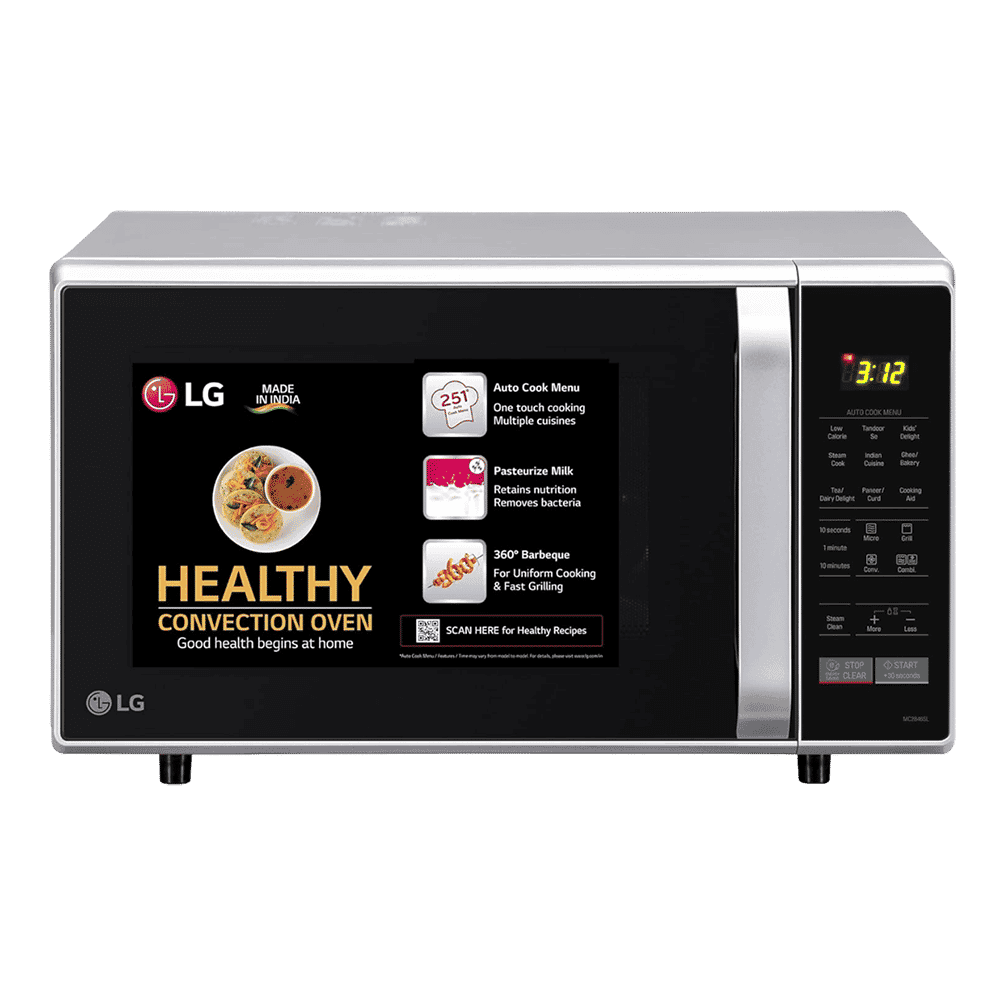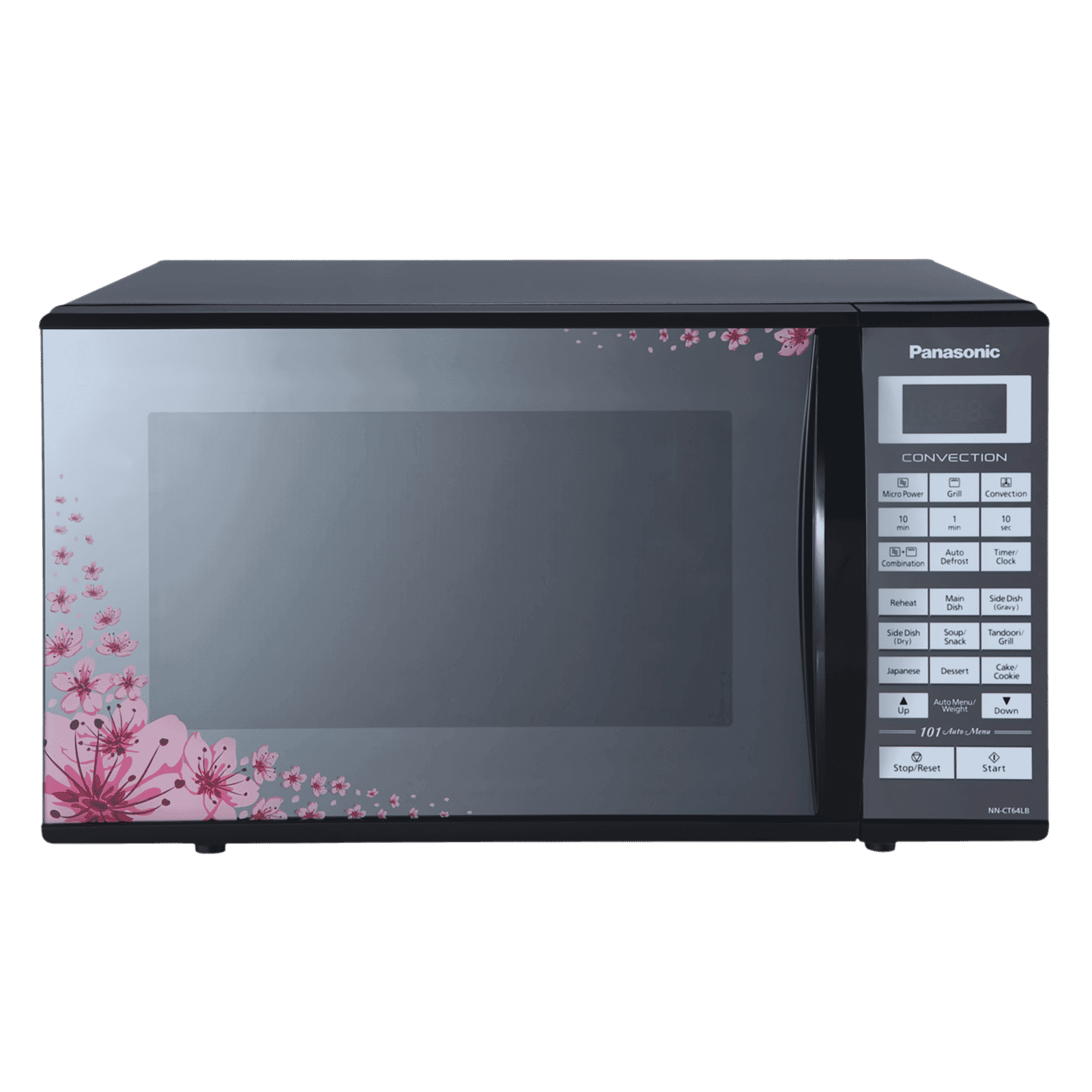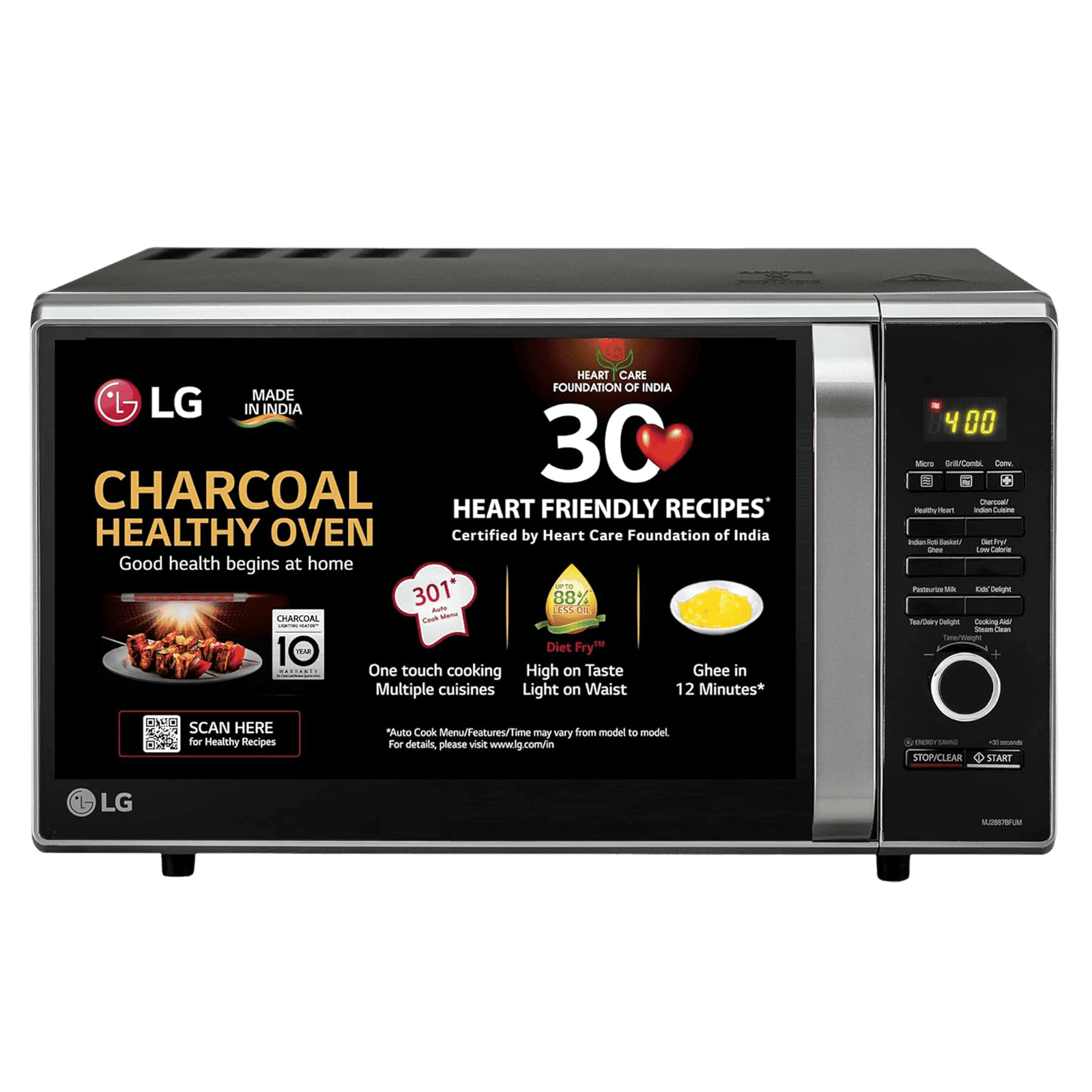
Home Appliances
•07 min read

Buy LG 28L Convection Microwave Oven with Diet Fry (MC2846SL, Silver) online at best prices from Croma. Check product details, reviews & more. Shop now!
Imagine this: You’re standing in your kitchen, ready to make a decision on a new appliance. Your mind is torn between an OTG and a microwave oven. Both have their unique features and uses, but which one is the better choice for your needs? This blog will help you understand the difference between an OTG (Oven, Toaster, Griller) and a microwave oven, making it easier for you to make an informed decision.
The primary purpose of this blog is to explain the key differences between an OTG and a microwave oven. By the end of this post, you’ll have a clear understanding of which appliance suits your cooking style and needs.
An OTG, or Oven, Toaster, Griller, is a versatile kitchen appliance designed for baking, toasting, and grilling. It uses heating elements and convection to cook food evenly. Whether you’re making a delicious cake, perfectly toasted bread, or grilled vegetables, an OTG can handle it all. The heating elements ensure that the food is cooked thoroughly and evenly, making it a favorite among baking enthusiasts.
A microwave oven is a common kitchen appliance that uses microwave radiation to cook food. Its primary functions include reheating, defrosting, and microwave cooking. With a microwave oven, you can quickly heat up leftovers, defrost frozen foods, and prepare simple meals in no time. The convenience and speed of a microwave make it an essential appliance in modern kitchens, especially for those with a busy lifestyle.
OTG: Uses heating elements and convection to cook food. The heat is distributed evenly, making it ideal for baking and grilling. The convection mode ensures that the hot air circulates around the food, resulting in even cooking.
Microwave Oven: Uses microwave radiation to cook food. It heats food quickly and is perfect for reheating and defrosting. The microwave radiation penetrates the food, causing the water molecules to vibrate and produce heat, which cooks the food from the inside out.
OTG: Generally slower, as it takes time to preheat and cook food. However, this slow cooking process is ideal for recipes that require precise temperature control. For instance, baking a cake in an OTG ensures that the cake rises evenly and has a perfect texture.
Microwave Oven: Faster cooking and reheating. It can heat food in a matter of minutes, making it perfect for quick meals. This speed is particularly useful for reheating leftovers or cooking simple meals when you’re short on time.
OTG: Best for baking, grilling, and toasting. It’s a must-have for baking enthusiasts and those who love to grill. You can bake a variety of items such as cakes, cookies, and bread, as well as grill vegetables and meat.
Microwave Oven: Great for reheating, defrosting, and quick cooking. Some models come with convection and grill modes, adding to their versatility. These additional features allow you to bake and grill, although the results may not be as good as an OTG.

Buy Panasonic 27L Convection Microwave Oven with 101 Autocook Menus (NN-CT64LBFDG, Silver/Black) online at best prices from Croma. Check product details, reviews & more. Shop now!
OTG: Superior for baking cakes, cookies, and bread. The even heat distribution ensures perfect results every time. Baking in an OTG allows you to achieve the right texture and consistency, which is crucial for baked goods.
Microwave Oven: Limited baking capabilities. While some models have convection features, they don’t match the performance of an OTG. Baking in a microwave can be challenging, and the results may not be as satisfactory.
OTG: Less efficient for quick reheating. It takes time to preheat and heat the food. If you only need to reheat food, using an OTG might be inconvenient due to the longer time required.
Microwave Oven: Highly efficient for reheating food quickly. It’s the go-to appliance for heating leftovers. The microwave can reheat food evenly and quickly, making it ideal for busy individuals.
OTG: Excellent for grilling meat and toasting bread. The heating elements ensure even grilling and toasting. You can prepare grilled sandwiches, kebabs, and roasted vegetables with ease.
Microwave Oven: Limited grilling capabilities, unless it has a convection feature. Even then, it may not match the performance of an OTG. Grilling in a microwave can be less effective, and the results may vary.
Ideal for baking and grilling enthusiasts.
Energy-efficient for specific cooking tasks.
Generally more affordable than microwave ovens with similar features.
OTGs are often more compact and can fit into smaller kitchen spaces.
Quick and convenient for everyday use.
Versatile with additional features like convection and grill modes.
Efficient for reheating and defrosting.
Microwaves are easy to use and require minimal maintenance.
OTG: Longer cooking times, not ideal for quick meals.
Microwave Oven: Limited baking and grilling capabilities compared to an OTG.

Buy LG 28L Charcoal Microwave Oven with Diet Fry (MJ2887BFUM.DBKQILN, Black) online at best prices from Croma. Check product details, reviews & more. Shop now!
Did You Know?
OTGs are generally more affordable and energy-efficient for baking.
Microwaves with convection features can offer a middle ground for quick baking needs.
Using the right cookware is essential for both OTG and microwave ovens to achieve the best results.
Yes, but it’s not as efficient as a microwave oven. Reheating in an OTG takes longer and may not be as convenient for quick meals.
OTG is better for baking due to its even heat distribution. If you frequently bake cakes, cookies, or bread, an OTG is the better choice.
Partially, but an OTG is still superior for baking and grilling. While a convection microwave can perform some baking and grilling tasks, it may not provide the same results as an OTG.
Ensure proper ventilation, avoid overcrowding, and use the correct temperature settings. Regularly clean the OTG to prevent buildup of food particles and grease, which can be a fire hazard.
Generally, microwaves consume more power for short bursts, while OTGs are more energy-efficient for longer cooking processes. Consider your usage patterns to determine which appliance is more cost-effective for you.
Microwave ovens are safe to use and do not pose any significant health risks. However, it's essential to use microwave-safe containers to avoid harmful chemicals leaching into the food.
Yes, metal utensils are safe to use in an OTG. However, avoid using them in a microwave oven as they can cause sparks and damage the appliance.
In summary, both OTG and microwave ovens have their unique benefits and drawbacks. An OTG is perfect for baking, grilling, and toasting, making it ideal for cooking enthusiasts. On the other hand, a microwave oven is quick, convenient, and versatile, making it perfect for everyday use. To make your shopping experience even more rewarding, visit Tata Neu for expert guidance and diverse product offerings. Enjoy the convenience of express delivery for orders placed before 6 PM and earn NeuCoins on every purchase. Shop smart and make the most of your kitchen with Tata Neu. Whether you prefer the precision of an OTG or the convenience of a microwave, Tata Neu and Croma have you covered with a wide range of options to suit your needs.